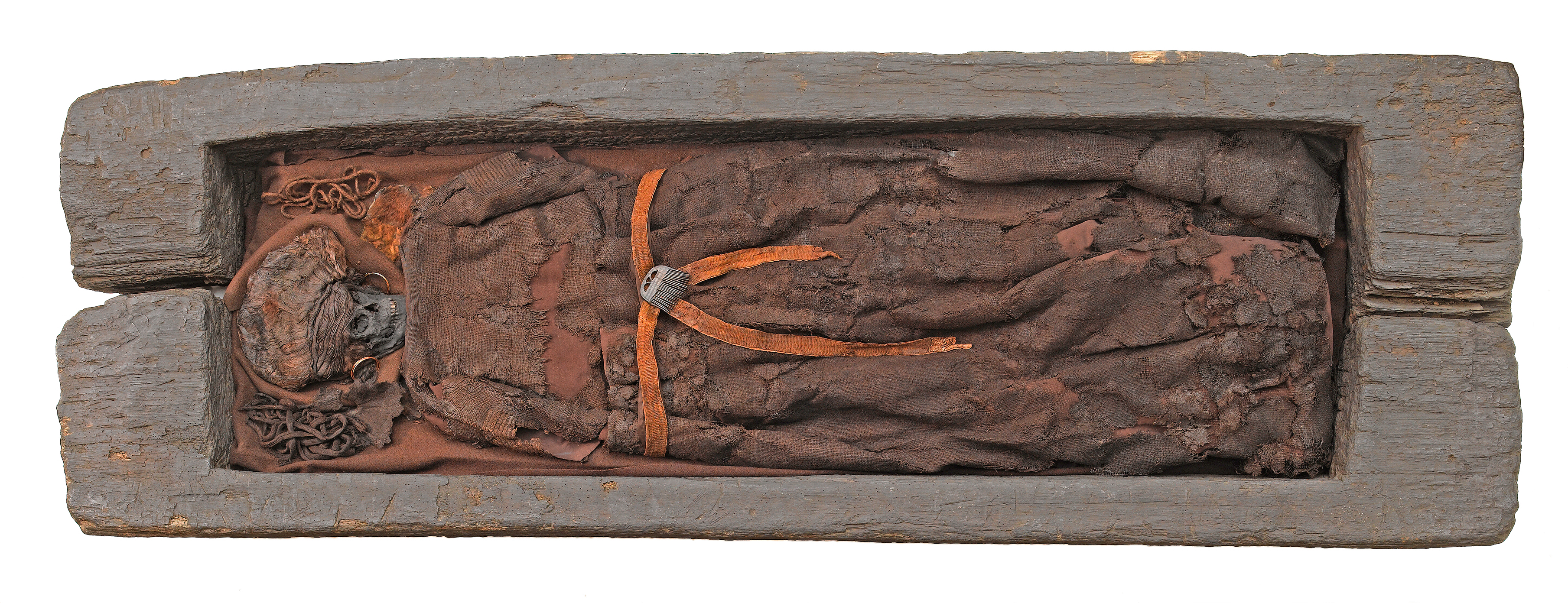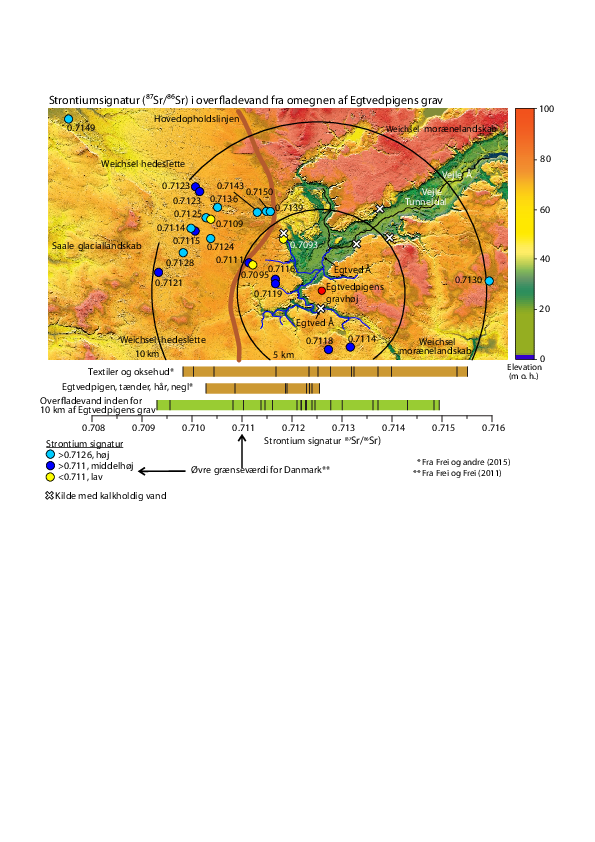New research indicates that the Egtved girl and the Skrydstrup woman were Danish
The Egtved girl and Skrydstrup woman were probably born and raised within a few kilometres of the Bronze Age burial mound they were buried in. Previously, strontium analyses have shown that they could not have come from Denmark, but according to researchers from the Department of Geoscience at Aarhus University, these studies failed to take into account that agricultural liming of the soil can change the local strontium signatures.


This is in direct conflict with studies by the National Museum of Denmark and the University of Copenhagen, which, based on strontium analyses in 2015 and 2017, concluded that the two women had to have grown up many hundred kilometres outside modern Denmark. Judging from the high strontium signatures in their residues, the previous studies concluded that the Egtved girl probably came from the Black Forest and the Skrydstrup woman possibly came from Bohemia. Furthermore, the Egtved girl had even travelled back and forth between Denmark and southern Germany in the last two years of her life.
However, these conclusions were based on an incorrect basis, say Erik Thomsen and Rasmus Andreasen from the Department of Geoscience at Aarhus University, who have just published their studies in the prestigious international online journal Science Advances.
Calcified data
The previous studies have compared strontium signatures in the two women's hair, teeth and nails with a map of strontium values in Denmark from 2011. This map showed lower strontium values in the areas in question than were found in the remains of the two women. The strontium values on the map, however, were measured in water samples from lakes, rivers and streams taken from all over Denmark, without taking into account that in many places the water is affected by the lime spread by farmers spread to improve the soil on their fields.
The lime runs off into watercourses and water holes, where it can alter the strontium signature dramatically. Danish agricultural lime contains large amounts of strontium with a low strontium signature (the signature refers to the relationship between the two strontium isotopes 87Sr and 86Sr).
"We’ve studied numerous streams, ponds and small lakes in central and western Jutland, and the result is the same almost every time: Watercourses and water holes in forests and natural areas that are unaffected by agricultural activity have high signature values and low concentrations of strontium, whereas agricultural areas have low signature values and high concentrations," explains Rasmus Andreasen.
In other words: The strontium signature in the water, soil and plants is in many places lower today than it was 3,300 years ago, when the two women lived and died.
Samples from pristine water reveal that the Egtved girl was local
If you use strontium analysis in archaeology, therefore, you need to take samples from areas that have not been disturbed by agriculture. And this is precisely what the two geologists from Aarhus University have done:
"We’ve measured strontium isotopes in water samples from twenty pristine ponds, lakes, and sources within a radius of 10 km from the Egtved girl's burial mound. And our data shows that strontium values in the remains of the Egtved girl could have been obtained within this radius," says Erik Thomsen.
The Egtved girl was not entirely stationary during her life. Two measurements from her hair, dated to about 6-9 months before her death, are exceptionally low. The two geologists believe that the girl probably spent some months in the Vejle river valley, where there is a lime-rich source with low strontium signature. She may have come here to graze livestock.
... as was the Skrydstrup woman
The Skrydstrup woman too could easily have got her strontium signature locally, even though the oldest measurements in her teeth and hair are relatively high, and the youngest from the last four years of her life are relatively low.
Her grave is very close to the so-called main stationary line, where the inland ice stopped during the Last Glacial Period. Deposits west of the main stationary line have relatively high strontium values, while deposits east of the line have lower strontium values, regardless of whether they are from pristine areas or agricultural areas.
The two geologists interpret this to mean that she grew up on the moorland plain west of the main stationary line, and that she moved to the hilly moraine landscape east of the line about four years before her death.
Many maps will have to be redrawn
The two researchers stress that their study is not only important for Danish research; many foreign studies of prehistoric migration are also based on maps with incorrect strontium isotope values.
"Many of these maps will also have to be revised. Naturally lime-free areas that are treated with agricultural lime are widespread on all continents with agriculture. This applies for South America, for example, and especially for areas along the main stationary line from the Last Glacial Period, which means all of northern Europe and northern North America," says Erik Thomsen.
For further information:
Associate Professor emeritus Erik Thomsen
Department of Geoscience
Aarhus University
Mail: erik.thomsen@geo.au.dk
Mobile: +45 2911 2961
Academic staff member Rasmus Andreasen
Department of Geoscience
Aarhus University
Mail: rasmus.andreasen@geo.au.dk
Mobile: +45 9350 8497
